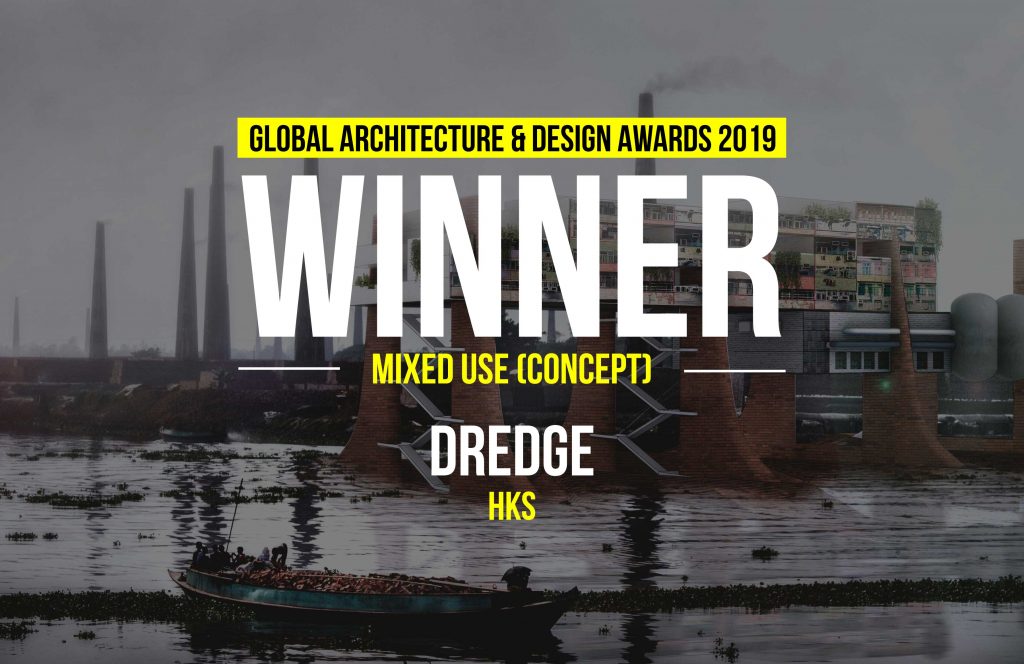Water — in the form of oceans, seas, lake, and rivers — has always been a significant force around which communities organize. Rivers are unique in that their constant flow means any point along their banks can be affected by changes upstream, and can affect changes downstream. Rapid urbanization, industrialization and increasing encroachment of the river’s edge have disrupted the balance of many rivers in the form of pollution, reduction of flow, and loss of riparian and aquatic habitats, imperilling the environment and human settlements across rivers’ entire length.
Global Design & Architecture Design Awards 2019
First Award | Category: Mixed Use (Concept)
Studio: HKS
Architects: Divya Nautiyal, Jason Fleming, and Kam Lawrence
Country: United States
- The first type, the base structure, is designed to collect silt and trash as the flood from the monsoon season recedes. The silt replaces topsoil as a raw material for bricks – nutrient-rich topsoil that is currently scrapped from surrounding farmlands. This allows the river to retain or improve its flood capacity while preserving the region’s food supply as well.
- For the second type, WasteToEnergy plants sit atop the base structure. Locals can sort through the collected waste and transform them into fuel for future brickmaking, thus reducing the need for burning coal which contributes heavily to air pollution. This can be done during the wet season when brickmaking stops, providing employment opportunities throughout the year to the migrant workers.
- With the promise of year-round employment, housing and public programs are also introduced as the third type, setting in motion a transformation from seasonal migrant work to a permanent, stable, and secure community, while also tackling the need for housing in this growing city.
